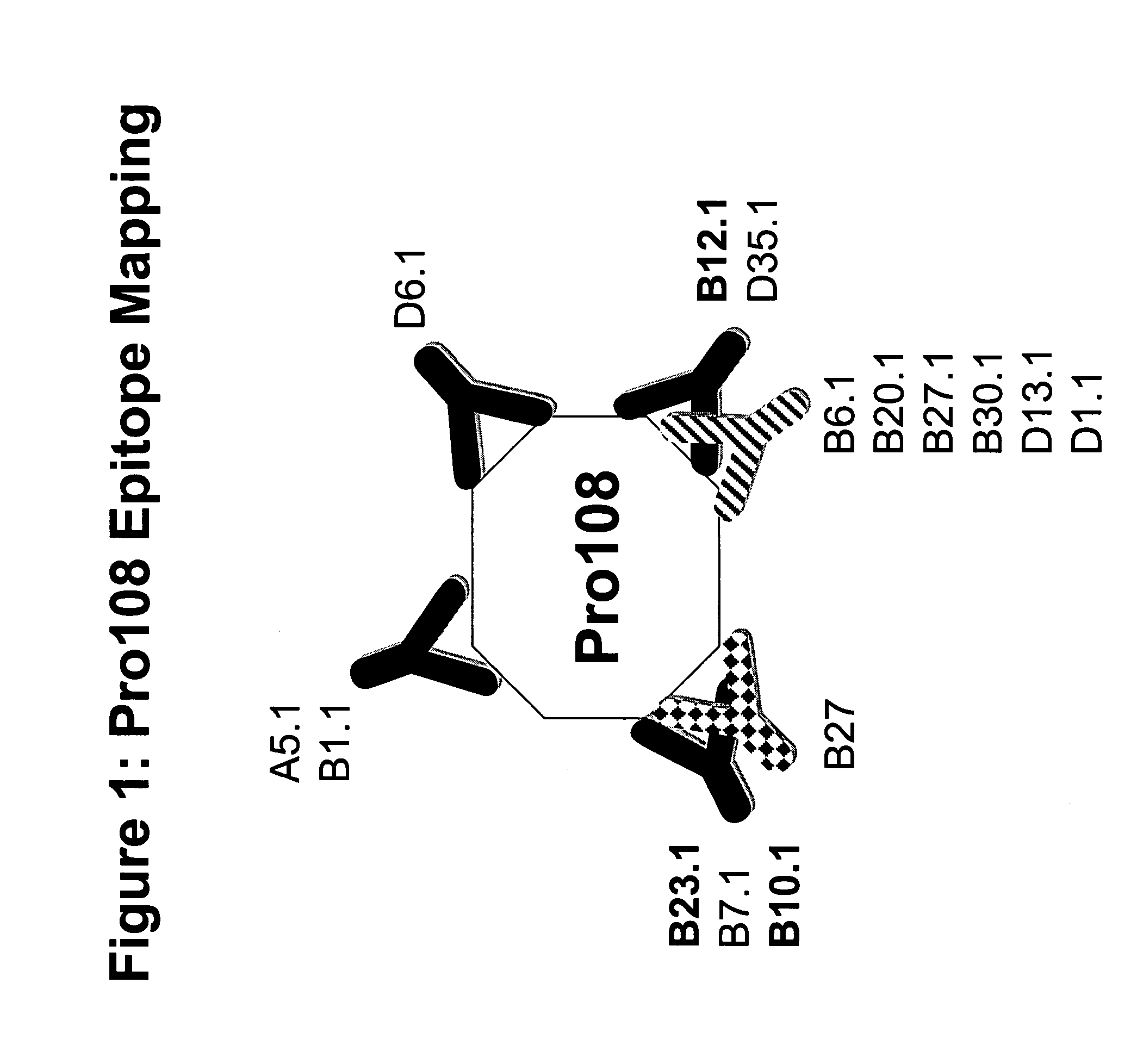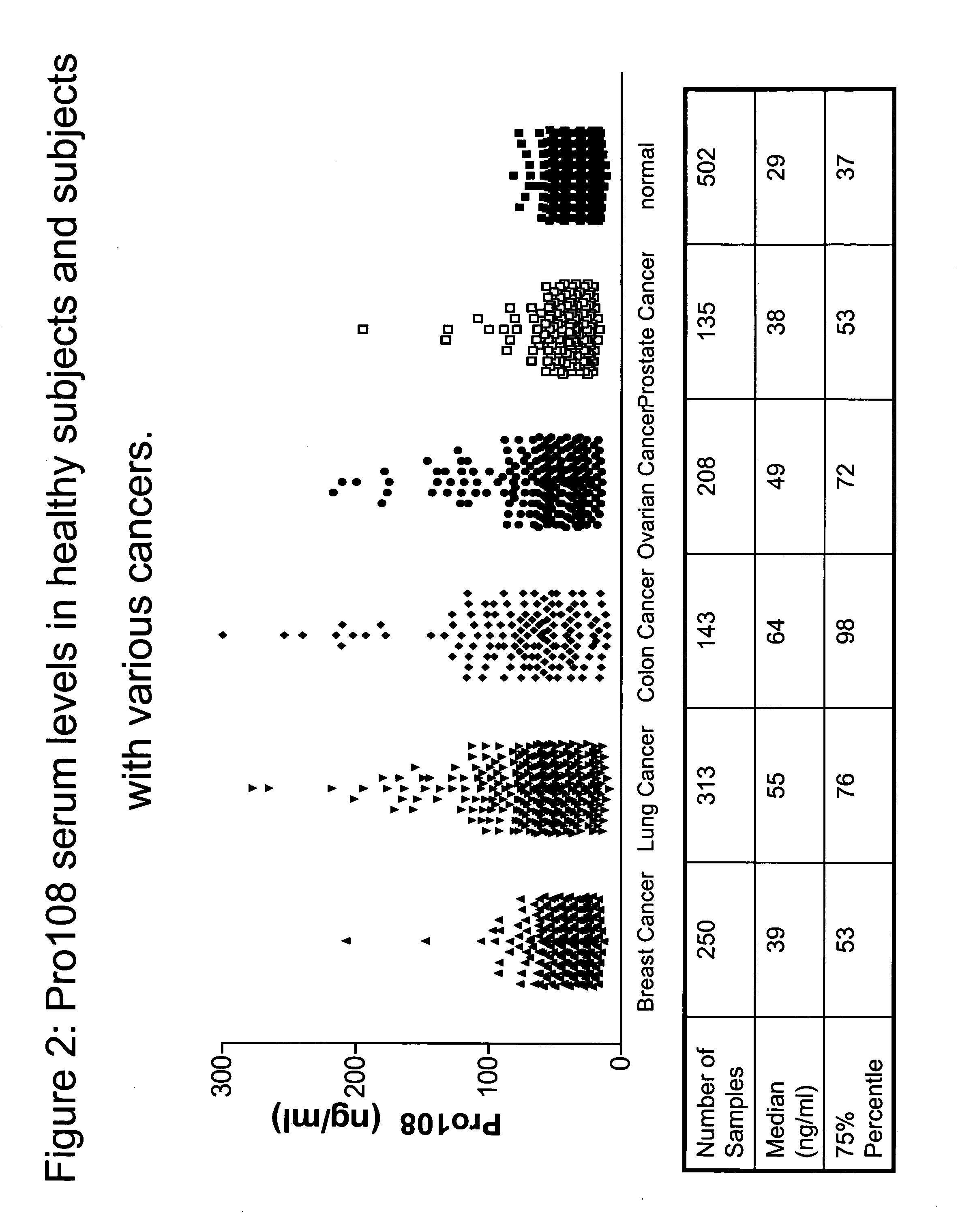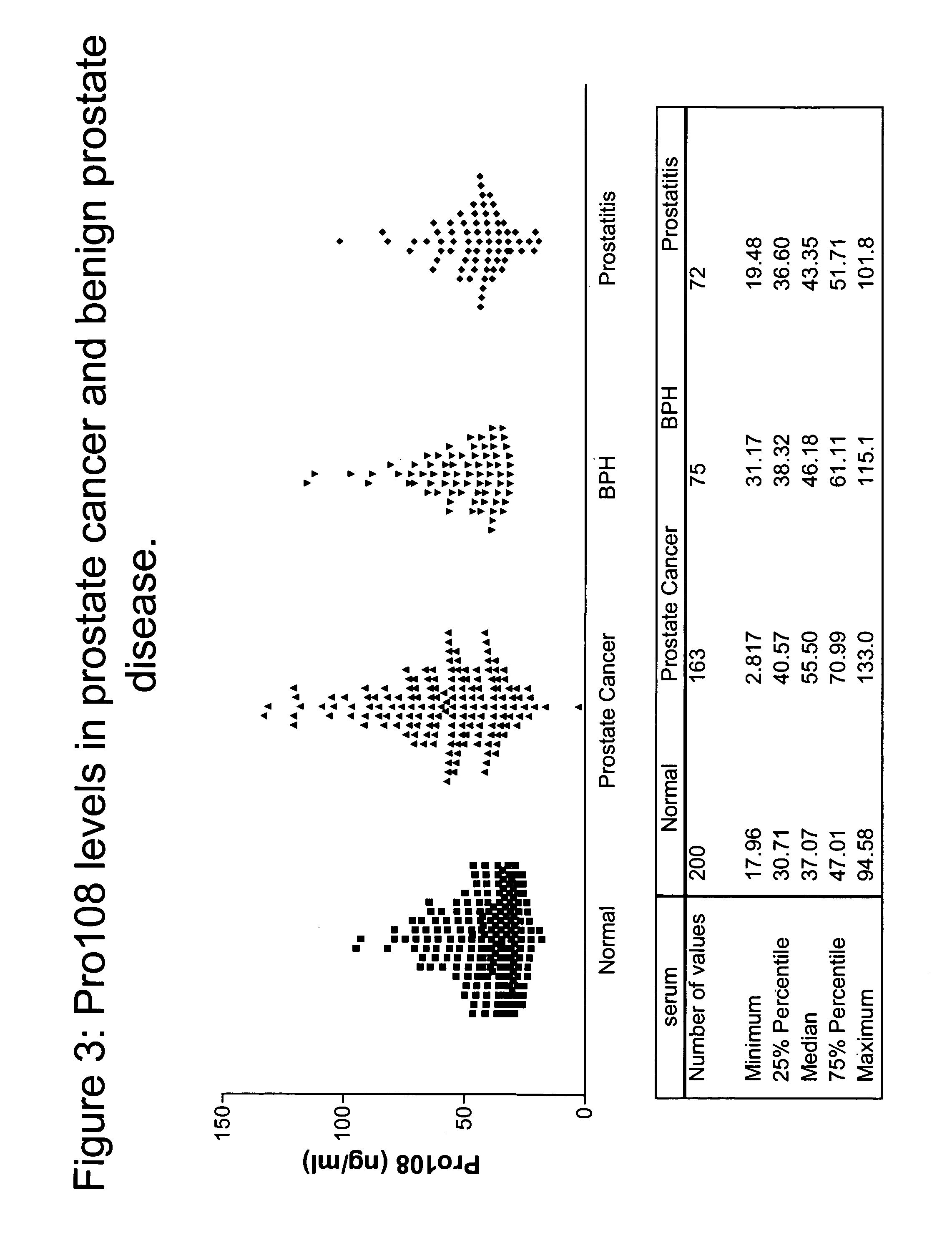Pro108 antibody compositions and methods of use and use of Pro108 to assess cancer risk
a technology of pro108 and composition, applied in the field of cancer risk assessment, can solve the problems of increased prostate cancer risk, etc., and achieves the effect of ovarian, colon, and reducing the risk of prostate cancer
- Summary
- Abstract
- Description
- Claims
- Application Information
AI Technical Summary
Benefits of technology
Problems solved by technology
Method used
Image
Examples
example 1
Production and Isolation of Monoclonal Antibody Producing Hybridomas
[0339]The following MAb / hybridomas of the present invention are described below: Pro108.A2, Pro108.A5, Pro108.B1, Pro108.B2, Pro108.B3, Pro108.B4, Pro108.B5, Pro108.B6, Pro108.B7, Pro108.B8, Pro108.B9, Pro108.B10, Pro108.B11, Pro108.B12, Pro108.B13, Pro108.B14, Pro108.B15, Pro108.B16, Pro108.B17, Pro108.B18, Pro108.B19, Pro108.B20, Pro108.B21, Pro108.B22, Pro108.B23, Pro108.B24, Pro108.B25, Pro108.B26, Pro108.B27, Pro108.B28, Pro108.B29, Pro108.B30, Pro108.B31, Pro108.B32, Pro108.B33, Pro108.B34, Pro108.B35, Pro108.B36, Pro108.B37, Pro108.B38, Pro108.B39, Pro108.B40, Pro108.B41, Pro108.B42, Pro108.B43, Pro108.B44, Pro108.B45.
[0340]If the MAb has been cloned, it will get the nomenclature “X.1,” e.g., the first clone of A7 will be referred to as A7.1, the second clone of A7 will be referred to as A7.2, etc. For the purposes of this invention, a reference to A7 will include all clones, e.g., A7.1, A7.2, etc. An alterna...
example 2
Tissue Distribution and Detection of Pro108 in Serum
Reverse Transcription-Polymerase Chain Reaction (RT-PCR)
[0367]To detect the presence and tissue distribution of Pro108 Reverse Transcription-Polymerase Chain Reaction (RT-PCR) was performed using cDNA generated from a panel of tissue RNAs. See, e.g., Sambrook et al., Molecular Cloning: A Laboratory Manual, 2d ed., Cold Spring Harbor Laboratory Press (1989) and; Kawasaki ES et al., PNAS 85(15):5698 (1988). Total RNA was extracted from a variety of tissues or cell lines and first strand cDNA is prepared with reverse transcriptase (RT). Each tissue panel includes 23 cDNAs from five cancer types (lung, ovary, breast, colon, and prostate) and normal samples of testis, placenta and fetal brain. Each cancer set is composed of three cancer cDNAs from different donors and one normal pooled sample. Using a standard enzyme kit from BD Bioscience Clontech (Mountain View, Calif.), Pro108 was detected with sequence-specific primers designed to o...
example 3
Sandwich and Checkerboard ELISA of Pro108
[0378]High binding polystyrene plates (Corning Life Sciences (MA)) were coated overnight at 4° C. with 8 ug / ml of anti-Pro108 MAb (note: later experiments used 4 ug / ml). The coating solution was aspirated off and free binding sites were blocked with 300 μl well Superblock-TBS (Pierce Biotechnology, Illinois) for 1 hour at room temperature. After washing 4× with TBS+0.1% Tween20, 25 ul (note: later experiments used 20 ul) of antigen was added to each well for 90 minutes incubation. For the checkerboard experiment, each pair was tested on 50 ng / ml and Ong / ml of recombinant Pro108-decaHis. For each Sandwich ELISA, a standard curve of 250, 100, 50, 10, 1 and 0 ng / ml Pro108 was run in parallel with the samples. Standard Curve and samples were diluted in Assay Buffer (TBS, 1% BSA, 1% Mouse Serum, 1% Calf Serum, 0.1% Tween20) to a final volume of 100 ul. For the detection, 100 μl Biotinylated MAb (1 μg / ml) were added to each well and incubated for 1...
PUM
| Property | Measurement | Unit |
|---|---|---|
| concentration | aaaaa | aaaaa |
| molecular weight | aaaaa | aaaaa |
| concentration | aaaaa | aaaaa |
Abstract
Description
Claims
Application Information
 Login to View More
Login to View More - R&D
- Intellectual Property
- Life Sciences
- Materials
- Tech Scout
- Unparalleled Data Quality
- Higher Quality Content
- 60% Fewer Hallucinations
Browse by: Latest US Patents, China's latest patents, Technical Efficacy Thesaurus, Application Domain, Technology Topic, Popular Technical Reports.
© 2025 PatSnap. All rights reserved.Legal|Privacy policy|Modern Slavery Act Transparency Statement|Sitemap|About US| Contact US: help@patsnap.com



